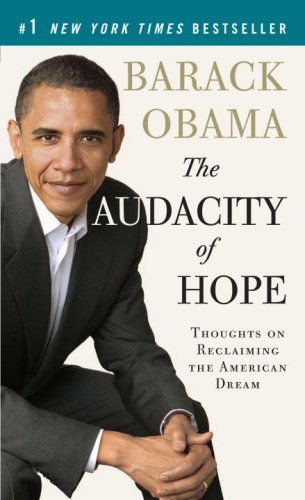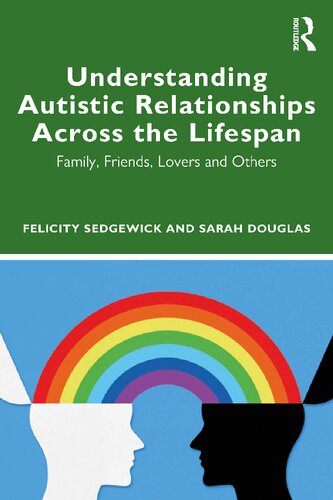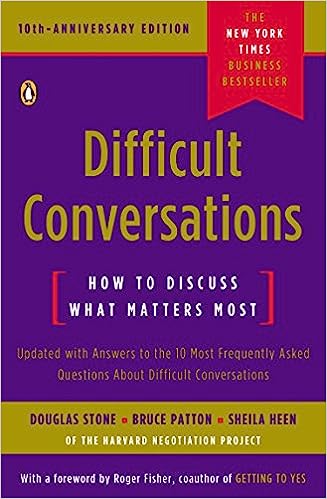موضوعات
آموزش و پرورش
ادبیات و زبان
پزشکی، دندانپزشکی و داروسازی
تاریخ و جغرافیا
داستان و رمان
دیگر
دین و فلسفه
روانشناسی
ریاضیات و آمار
سلامتی، تناسب اندام و رژیم غذایی
شیمی و پلیمر
علوم اجتماعی و حقوق
علوم زیستی و بیوتکنولوژی
فیزیک و نجوم
کامپیوتر و اینترنت
کتابهای کودکان و داستان
کسب و کار و اقتصاد
کشاورزی و دامپزشکی و غذا
معماری
مهندسی و فناوری
هنر و تئاتر
محصولات
Research Methods in Family Therapy, Second Edition - Original PDF
نویسندگان: خلاصه: In this widely adopted text and professional reference, leading contributors provide the knowledge needed to design strong qualitative, quantitative, and mixed-method studies; analyze the resulting data; and translate findings into improved practices and programs. Following a consistent format, user-friendly chapters thoroughly describe the various methodologies and illustrate their applications with helpful concrete examples.Making Space for Justice: Social Movements, Collective Imagination, and Political Hope - Original PDF
نویسندگان: خلاصه: From nineteenth-century abolitionism to Black Lives Matter today, progressive social movements have been at the forefront of social change. Yet it is seldom recognized that such movements have not only engaged in political action but also posed crucial philosophical questions about the meaning of justice and about how the demands of justice can be met. Michele Moody-Adams argues that anyone who is concerned with the theory or the practice of justice―or both―must ask what can be learned from social movements. Drawing on a range of compelling examples, she explores what they have shown about the nature of justice as well as what it takes to create space for justice in the world. Moody-Adams considers progressive social movements as wellsprings of moral inquiry and as agents of social change, drawing out key philosophical and practical principles. Social justice demands humane regard for others, combining compassionate concern and robust respect. Successful movements have drawn on the transformative power of imagination, strengthening the motivation to pursue justice and to create the political institutions and social policies that can sustain it by inspiring political hope. Making Space for Justice contends that the insights arising from social movements are critical to bridging the gap between discerning theory and effective practice―and should be transformative for political thought as well as for political activism.Orange Empire: California and the Fruits of Eden - Original PDF
نویسندگان: خلاصه: This innovative history of California opens up new vistas on the interrelationship among culture, nature, and society by focusing on the state's signature export-the orange. From the 1870s onward, California oranges were packaged in crates bearing colorful images of an Edenic landscape. This book demystifies those lush images, revealing the orange as a manufactured product of the state's orange industry. Orange Empire brings together for the first time the full story of the orange industry-how growers, scientists, and workers transformed the natural and social landscape of California, turning it into a factory for the production of millions of oranges. That industry put up billboards in cities across the nation and placed enticing pictures of sun-kissed fruits into nearly every American's home. It convinced Americans that oranges could be consumed as embodiments of pure nature and talismans of good health. But, as this book shows, the tables were turned during the Great Depression when Upton Sinclair, Carey McWilliams, Dorothea Lange, and John Steinbeck made the Orange Empire into a symbol of what was wrong with America's relationship to nature. Illustrations: 31 b/w photographs, 1 mapThe Audacity of Hope. Thoughts on Reclaiming the American Dream - Original PDF
نویسندگان: خلاصه: Republicans and Democrats ON MOST DAYS, I enter the Capitol through the basement. A small subway train carries me from the Hart Building, where my office is located, through an underground tunnel lined with the flags and seals of the fifty states. The train creaks to a halt and I make my way, past bustling staffers, maintenance crews, and the occasional tour group, to the bank of old elevators that takes me to the second floor. Stepping off, I weave around the swarm of press that normally gathers there, say hello to the Capitol Police, and enter, through a stately set of double doors, onto the floor of the U.S. Senate. The Senate chamber is not the most beautiful space in the Capitol, but it is imposing nonetheless. The dun-colored walls are set off by panels of blue damask and columns of finely veined marble. Overhead, the ceiling forms a creamy white oval, with an American eagle etched in its center. Above the visitors’ gallery, the busts of the nation’s first twenty vice presidents sit in solemn repose. And in gentle steps, one hundred mahogany desks rise from the well of the Senate in four horseshoe-shaped rows. Some of these desks date back to 1819, and atop each desk is a tidy receptacle for inkwells and quills. Open the drawer of any desk, and you will find within the names of the senators who once used it—Taft and Long, Stennis and Kennedy—scratched or penned in the senator’s own hand. Sometimes, standing there in the chamber, I can imagine Paul Douglas or Hubert Humphrey at one of these desks, urging yet again the adoption of civil rights legislation; or Joe McCarthy, a few desks over, thumbing through lists, preparing to name names; or LBJ prowling the aisles, grabbing lapels and gathering votes. Sometimes I will wander over to the desk where Daniel Webster once sat and imagine him rising before the packed gallery and his colleagues, his eyes blazing as he thunderously defends the Union against the forces of secession. But these moments fade quickly. Except for the few minutes that it takes to vote, my colleagues and I don’t spend much time on the Senate floor. Most of the decisions— about what bills to call and when to call them, about how amendments will be handled and how uncooperative senators will be made to cooperate—have been worked out well in advance by the majority leader, the relevant committee chairman, their staffs, and (depending on the degree of controversy involved and the magnanimity of the Republican handling the bill) their Democratic counterparts. By the time we reach the floor and the clerk starts calling the roll, each of the senators will have determined—in consultation with his or her staff, caucus leader, preferred lobbyists, interest groups, constituent mail, and ideological leanings—just how to position himself on the issue. It makes for an efficient process, which is much appreciated by the members, who are juggling twelve- or thirteen-hour schedules and want to get back to their offices to meet constituents or return phone calls, to a nearby hotel to cultivate donors, or to the television studio for a live interview. If you stick around, though, you may see one lone senator standing at his desk after the others have left, seeking recognition to deliver a statement on the floor. It may be an explanation of a bill he’s introducing, or it may be a broader commentary on some unmet national challenge. The speaker’s voice may flareRip by XmosRips with passion; his arguments—about cuts to programs for the poor, or obstructionism on judicial appointments, or the need for energy independence—may be soundly constructed. But the speaker will be addressing a near-empty chamber: just the presiding officer, a few staffers, the Senate reporter, and C-SPAN’s unblinking eye. The speaker will finish. A blue-uniformed page will silently gather the statement for the official record. Another senator may enter as the first one departs, and she will stand at her desk, seek recognition, and deliver her statement, repeating the ritual. In the world’s greatest deliberative body, no one is listeningA devil's chaplain: reflections on hope, lies, science, and love - Original PDF
نویسندگان: خلاصه: The first essay in this volume, A Devil's Chaplain (1.1), has not previously been published. The title, borrowed by the book, is explained in the essay itself. The second essay, What is True? (1.2), was my contribution to a symposium of that name, in Forbes ASAP magazine. Scientists tend to take a robust view of truth and are impatient of philosophical equivocation over its reality or importance. It's hard enough coaxing nature to give up her truths, without spectators and hangers-on strewing gratuitous obstacles in our way. My essay argues that we should at least be consistent. Truths about everyday life are just as much - or as little - open to philosophical doubt as scientific truths. Let us shun double standards. At times I fear turning into a double standards bore. It started in child- hood when my first hero, Doctor Dolittle (he returned irresistibly to mind when I read the Naturalist's Voyage of my adult hero, Charles Darwin), raised my consciousness, to borrow a useful piece of feminist jargon, about our treatment of animals. Non-human animals I should say, for, of course, we are animals. The moral philosopher most justly credited with raising today's consciousness in this direction is Peter Singer, lately moved from Australia to Princeton. His The Great Ape Project aims towards granting the other great apes, as near as is practically possible, civil rights equivalent to those enjoyed by the human great ape. When you stop and ask yourself why this seems so immediately ridiculous, the harder you think, the less ridiculous it seems. Cheap cracks like 'I suppose you'll need reinforced ballot-boxes for gorillas, then?' are soon dispatched: we give rights, but not the vote, to children, lunatics and Members of the House of Lords. The biggest objection to the GAP is 'Where will it all end? Rights for oysters?' (Bertrand Russell's quip, in a similar context). Where do you draw the line? Gaps in the Mind (1.3), my own contribution to the GAP book, uses an evolutionary argument to show that we should not be in the business of drawing lines in the first place. There's no law of nature that says boundaries have to be clear-cut.Understanding Autistic Relationships Across the Lifespan: Family, Friends, Lovers and Others - Original PDF
نویسندگان: خلاصه: Autism, and autistic people, have been around as long as humans have. It is likely there were ancient humans with behaviours, cognitive patterns, and sensory sen- sitivities that would meet clinical diagnostic criteria (though that would be taking the game of historical diagnoses too far!). Autism, and other neurodevelopmen- tal conditions, are part of the natural range of human biodiversity. This belief is known as the neurodiversity paradigm, and it is the framework within which we are writing this book. We take the approach that autistic people (see the language note that follows) are valid in their way of being in, experiencing, and relating to the world, and hope to help them and others understand some of these differences, rather than arguing that they are somehow ‘wrong’ or need changing to be more like non-autistic people. This book is not about the definitions or evolution of neurodiversity, but if you would like some further reading on the topic, we would recommend looking at the book list we provide at the back! Throughout the book, we will be using the terms ‘autistic people’ and ‘non- autistic people’. This is known as identity-first language, and has been shown to be the preference of the majority of autistic people who take part in research on the topic (Kenny et al., 2016). This is different to the way a lot of clinicians, pro- fessionals, and researchers have historically talked about autistic people, as they have tended to use ‘people with autism’ or say someone ‘has autism’ – known as person-first language. Originally this was used because it was thought to empha- sise the person rather than the condition (Kenny et al., 2016), and in some cases it is the preferred language of people affected themselves (e.g. in eating disorder research, people are described as ‘having anorexia’). However, recent research in the autism field has shown that person-first language can increase the stigma against autistic people and has a dehumanising rather than humanising effect on how oth- ers think about them (Cage et al., 2022). Combined with the stated preference of many autistic people, therefore, we use identity-first language in our writing, INTRODUCTION DOI: 10.4324/9781003044536-1 2 Introduction whilst recognising that a proportion of autistic people prefer person-first language. We have no wish to intimidate a minority within a minority and are following majority preference for simplicity. Autism has both a very complex and a very simple history, depending on how you look at it. The simple version is that two psychologists in the 1940s, Kanner in the United States and Asperger in Austria, independently noticed that they were seeing children who had a shared set of characteristics – difficulties with social interaction (to varying degrees), a preference for routine and sameness, and chal- lenges with everyday living skills. Kanner called this ‘autism’ (a preference for one- self or being alone), and Asperger called it ‘Aspergers’ (a preference for showing off his ego). The two did not know about each other’s work, and autism became the dominant diagnosis as Kanner published in English, whereas Asperger published in German (which was not the way to make your work popular in 1940s Europe, for obvious reasons. It may also have had something to do with the fact that Asperger worked with the Nazis in highly problematic ways.). These diagnoses were unchanged over the next 40 years or so, until Lorna Wing and Judy Gould, in 1980s South London, did a large-scale population level study and realised that the children with these two diagnoses were actually part of the same spectrum, as were lots of children who had not been given a formal diagnosis of either. This is where the term ‘the autism spectrum’ comes from, and it was designed to create a broader and more inclusive sense of what being autis- tic meant and could look like. This pair of researchers also invented ‘the triad of impairments’, which, while not the terminology we use today, revolutionised how autistic people were recognised and opened up diagnosis and support for more of those who needed it. This triad was made up of difficulties with: • Imagination and executive function (things like guessing what other people were thinking, or being able to make a plan based on imagining what will happen next) • Social communication (things like being non-verbal, not following standard ‘rules’ of communication like turn taking in conversation, or struggling with eye contact) • Repetitive behaviours and restricted interests (things like repeated physical move- ments such as hand flapping, or having intense special interests) The rise in autism diagnoses following this expansion of the diagnostic criteria from the strict ones set out earlier, especially removing the need for co-occurring learning difficulties Kanner used, was significant. This coincided with the rolling out of the MMR vaccine; and a highly questionable researcher called Andrew Wakefield used this correlation to publish his idea that the vaccine was causing autism in children. What he did not publish was that he was paid by the rival vaccine company, had faked his results, and the blood samples he ‘used’ had been collected without parental consent from children at a birthday party. If you want a Introduction 3 fuller idea of just how wrong his work was, there are literally thousands of academic papers proving it – but these tend not to make such good Facebook memes, and hence we have the anti-vaxxer movement. Regardless of that particular issue, autism diagnoses have generally continued to rise. This is because we are getting better at spotting when someone is autistic, our diagnostic tools have improved, and we are starting to recognise that autism can present in an even wider variety of ways than we thought in the 1980s. It is also because there is now a recognition that we can – and should – diagnose adults who were missed in childhood, for a variety of reasons. For a long time, if someone was not diagnosed before the age of about 14, they were highly unlikely to get a diagnosis at all, because autism was thought to be a ‘childhood condition’. The fact that autistic children grow into autistic adults was somehow lost on a lot of the early researchers. In 2013, on the basis of evidence from autistic people and clinicians, sensory sensitivities (being under/hypo- or over/hyper-sensitive on one of the five senses) were added to the diagnostic criteria. Similarly, there is growing research into and awareness of how autism can look different in those who internalise a lot of their experiences and those who externalise them – which is more what is considered ‘classically autistic’. A lot of these more nuanced ideas about what autism is have come from the autism community itself, with autistic advocates and academics driving change and increasing societal awareness. There is still plenty of work to do, but the direction of movement seems positive. There is also, as we said, a much more complex story which can be told about autism and how autism research has developed over time. That isn’t the focus of this book (though it is the focus of Neurotribes, by Steve Silberman), and so we won’t try to tell it all here. What is relevant for the current book is the focus on social dif- ficulties, which have characterised autism research and stereotypes from the earliest days, back in the 1940s, and the assumptions this led people to make about autistic relationships until very recently. Most autism research, researchers, and parents of autistic people, for most of the last 80 years, have functioned based on the assumption that because autistic people had difficulties with making and maintaining friendships and relationships, had dif- ferent social interaction patterns, and did not show distress about these things in the ways they expected . . . that autistic people did not want friends or romantic relationships . . . that these were just things autistic people were hardwired not to value, or be interested in at all. Avoiding eye contact was seen as a sign of not wanting to engage with the person who was speaking; not inferring someone’s true intentions was seen as a failure to understand that other people have minds (yes, really); and not making friends at school was assumed to be because the child did not want friends and was happier on their own. A whole academic discipline of autism studies, with corresponding theories, was built upon the basis of these observations of social difficulty (along with the other two parts of the triad). A few examples of these theories followآیا کتاب مورد نظر هنوز بر روی سایت قرار نگرفته است؟ جای نگرانی نیست! کافی است بر روی گزینه سفارش کتاب کلیک کرده و درخواست خود را ثبت کنید. در کمتر از چند ساعت کتاب شما را آماده خواهیم کرد.









